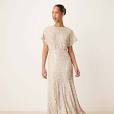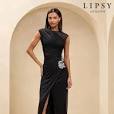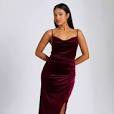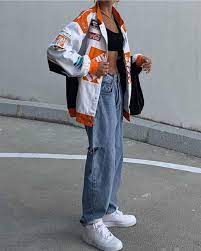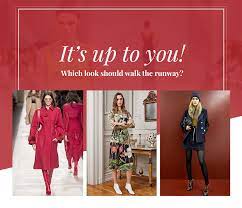Marketing Campaigns for Clothing: Unleashing the Power of Style
In the fast-paced world of fashion, marketing campaigns play a pivotal role in capturing the attention of consumers and establishing a brand’s presence. With ever-evolving trends and an increasingly competitive market, clothing brands must employ innovative strategies to stand out from the crowd. Let’s explore some effective marketing campaign tactics that have revolutionized the industry.
- Storytelling: Clothing is more than just fabric; it tells a story. Successful campaigns often weave narratives that resonate with consumers on an emotional level. By creating relatable characters or showcasing real-life experiences, brands connect with their target audience and build a sense of authenticity.
- Influencer Collaborations: In recent years, influencer marketing has become a game-changer for clothing brands. Partnering with social media influencers who embody their brand values allows companies to reach a wider audience and tap into niche markets. Authentic collaborations can generate buzz, drive engagement, and boost sales.
- User-Generated Content (UGC): Consumers love to be part of the creative process. Encouraging customers to share photos or videos featuring their favorite outfits creates a sense of community and builds trust in the brand. UGC campaigns not only showcase real people wearing the clothes but also provide valuable social proof for potential buyers.
- Experiential Marketing: Immersive experiences leave lasting impressions on consumers’ minds. Fashion brands are increasingly hosting pop-up shops, fashion shows, or interactive events to engage customers directly. These experiences allow people to interact with the brand physically, fostering a stronger connection and generating excitement around new collections.
- Social Media Engagement: With billions of users worldwide, social media platforms offer an unparalleled opportunity for clothing brands to showcase their products and engage directly with their audience. Brands that leverage platforms like Instagram or TikTok effectively can create viral moments through captivating visuals, engaging captions, and interactive challenges.
- Sustainability and Ethical Practices: In an era of heightened environmental consciousness, marketing campaigns that highlight a brand’s commitment to sustainability and ethical practices resonate deeply with consumers. Brands that prioritize eco-friendly materials, fair trade, or charitable initiatives can leverage these values in their campaigns to attract like-minded customers.
- Personalization and Customization: Today’s consumers seek unique experiences tailored to their individual preferences. Clothing brands can leverage technology to offer personalized recommendations or allow customers to customize their garments. Marketing campaigns that emphasize the ability to create one-of-a-kind pieces tap into the desire for self-expression and exclusivity.
- Collaborative Partnerships: Joining forces with other brands or designers can create a buzz around new collections and attract diverse audiences. Collaborations often lead to limited-edition releases or capsule collections, generating excitement and driving sales through the combined influence of both brands.
In the ever-evolving landscape of fashion marketing, creativity, authenticity, and adaptability are key. By embracing innovative strategies and staying attuned to consumer preferences, clothing brands can create impactful marketing campaigns that resonate with their target audience, foster brand loyalty, and drive business growth in this dynamic industry.
5 Essential Marketing Tips for Clothing Campaigns in the UK
- Utilise social media platforms to reach a larger audience.
- Offer discounts and promotions to encourage sales.
- Use eye-catching visuals to draw attention to your products.
- Incorporate influencer marketing into your campaigns for additional reach and credibility.
- Collect customer feedback and use it to improve future campaigns.
Utilise Social Media Platforms to Reach a Larger Audience: Unlocking the Power of Online Fashion Marketing
In today’s digital age, social media has become an indispensable tool for clothing brands to connect with their target audience and expand their reach. With billions of active users across various platforms, harnessing the power of social media is a game-changer when it comes to marketing campaigns for clothing. Let’s delve into why utilising social media platforms is crucial for reaching a larger audience.
First and foremost, social media provides an unparalleled opportunity to showcase your brand’s unique style, personality, and products. Platforms like Instagram, Facebook, Twitter, and TikTok allow you to visually engage your audience with stunning imagery or captivating videos. By curating an aesthetically pleasing feed or sharing behind-the-scenes glimpses of your design process, you can create an immersive experience that resonates with fashion enthusiasts.
Moreover, social media platforms offer powerful targeting capabilities that enable you to reach specific demographics or niche markets. Through data-driven insights and analytics tools provided by these platforms, you can identify your ideal customer profile and tailor your content accordingly. This ensures that your marketing campaigns are seen by those who are most likely to be interested in your clothing brand.
One of the greatest advantages of social media is its ability to foster direct engagement with your audience. By responding to comments, messages, or mentions promptly, you can build meaningful connections and establish a sense of authenticity. Encouraging user-generated content further amplifies this engagement as customers become advocates for your brand by sharing their own experiences with your clothing.
Social media also offers opportunities for collaboration and partnerships. By collaborating with influencers or other brands in the fashion industry, you can tap into their existing follower base and gain exposure to new audiences. Influencers can help promote your products through sponsored posts or collaborations that align with their personal style and values.
Another advantage of utilising social media is the ability to run targeted advertisements. With advanced targeting options, you can ensure that your ads are shown to individuals who match your desired customer profile. This precision targeting maximises the effectiveness of your marketing campaigns and optimises your return on investment.
Lastly, social media platforms provide valuable insights into consumer preferences, trends, and behaviours. By monitoring engagement metrics, such as likes, comments, shares, and click-through rates, you can gain a deeper understanding of what resonates with your audience. This data-driven approach allows you to refine your marketing strategies and create content that generates maximum impact.
In conclusion, social media platforms offer an incredible opportunity for clothing brands to reach a larger audience and connect with fashion enthusiasts worldwide. By leveraging the power of visual storytelling, targeted advertising, influencer collaborations, and direct engagement with customers, social media becomes a vital tool in driving brand awareness and boosting sales. Embrace the digital landscape and unlock the potential of online fashion marketing through strategic utilisation of social media platforms.
Boosting Sales through Discounts and Promotions: A Winning Strategy for Clothing Brands
In the competitive world of fashion, discounts and promotions have become a tried-and-true method for clothing brands to entice customers and drive sales. Offering special deals not only attracts attention but also creates a sense of urgency and excitement among consumers. Let’s explore why discounts and promotions are a winning strategy for clothing brands.
Firstly, discounts and promotions provide an immediate incentive for customers to make a purchase. Whether it’s a limited-time sale, seasonal promotion, or exclusive discount code, these offers create a sense of urgency that encourages shoppers to act quickly. By providing an opportunity to save money or receive additional benefits, brands can motivate potential buyers to make that final decision.
Moreover, discounts and promotions can help clear out excess inventory or boost sales during slower periods. By offering discounted prices on older collections or excess stock, clothing brands can create space for new arrivals while still generating revenue. This strategy not only benefits the brand financially but also allows customers to access stylish garments at more affordable prices.
Additionally, discounts and promotions serve as powerful marketing tools. When executed strategically, they generate buzz around the brand and attract new customers. Social media platforms provide an ideal avenue for promoting these offers, allowing brands to reach wider audiences through engaging visuals and compelling captions.
Furthermore, these promotional campaigns foster customer loyalty by rewarding repeat buyers. Exclusive discounts or early access to sales can make customers feel valued and appreciated. By nurturing this sense of loyalty, clothing brands can cultivate long-term relationships with their clientele.
However, it’s important for clothing brands to strike a balance when using discounts and promotions. Over-reliance on constant sales may devalue the brand in the eyes of consumers or train them to wait for discounts before making purchases at full price. It is crucial to maintain the perceived value of products while still offering attractive deals.
In conclusion, offering discounts and promotions is an effective strategy for clothing brands to boost sales, attract new customers, and foster loyalty. By creating a sense of urgency, clearing out excess inventory, and utilizing marketing channels effectively, brands can leverage these offers to drive revenue and maintain a competitive edge in the ever-evolving fashion industry.
Use eye-catching visuals to draw attention to your products.
Use Eye-Catching Visuals to Draw Attention to Your Products: The Power of Visual Marketing in Clothing Campaigns
In the world of fashion, where aesthetics reign supreme, captivating visuals hold immense power. When it comes to marketing campaigns for clothing, the use of eye-catching visuals can make all the difference in capturing the attention of consumers and enticing them to explore your products further.
Humans are visual creatures by nature, and our brains are wired to respond strongly to visually stimulating content. By incorporating visually striking elements into your marketing campaigns, you can create a powerful impact that lingers in the minds of potential customers.
One effective way to leverage visuals is through high-quality product photography. Showcase your clothing items in a visually appealing manner that highlights their unique features, textures, and colours. Invest in professional photography or collaborate with skilled photographers who can capture the essence of your brand and make your products shine.
Additionally, consider using models or influencers who embody your brand’s image and style. By featuring relatable individuals wearing your clothing line, you allow potential customers to envision themselves in those outfits. This connection sparks an emotional response and encourages them to explore further.
Another powerful visual technique is storytelling through imagery. Craft narratives that evoke emotions and resonate with your target audience’s aspirations or desires. Use imagery that transports viewers into a world where your clothing becomes an essential part of their lives. Whether it’s showcasing a glamorous lifestyle or celebrating individuality and self-expression, these visuals create an emotional bond with consumers.
Social media platforms provide an ideal space for sharing eye-catching visuals. Instagram, for instance, is a visual-centric platform where users actively seek out inspiring content. Utilize this platform (and others like it) to share captivating images that showcase your products in creative ways – from flat lays and styled outfits to behind-the-scenes glimpses of the design process.
Remember that consistency is key when it comes to visual branding. Develop a cohesive aesthetic across all marketing materials, including your website, social media profiles, and advertisements. This visual consistency helps build brand recognition and reinforces the overall image you want to portray.
In conclusion, incorporating eye-catching visuals into your marketing campaigns for clothing is a powerful strategy to grab attention, spark interest, and leave a lasting impression on potential customers. By investing in high-quality photography, leveraging relatable models or influencers, telling compelling stories through imagery, and maintaining a consistent visual brand identity, you can effectively draw attention to your products and stand out in the competitive fashion landscape.
Incorporate influencer marketing into your campaigns for additional reach and credibility.
Incorporate Influencer Marketing: Amplify Reach and Boost Credibility in Your Clothing Campaigns
In today’s digital age, influencer marketing has emerged as a powerful tool for clothing brands to expand their reach and establish credibility. By collaborating with social media influencers who resonate with their target audience, brands can tap into new markets, drive engagement, and ultimately boost sales. Here’s why incorporating influencer marketing into your clothing campaigns is a game-changer.
Firstly, influencers have built a loyal following based on their expertise, authenticity, and relatability. When they endorse a clothing brand or showcase its products in their content, it instantly creates trust among their followers. Consumers perceive these influencers as knowledgeable sources who provide honest opinions and recommendations. By partnering with influencers whose values align with your brand’s ethos, you can leverage their credibility to enhance your own.
Secondly, influencer marketing allows clothing brands to access niche markets that may be difficult to reach through traditional advertising channels. Influencers often have dedicated fan bases that share similar interests or demographics. Collaborating with influencers who cater to specific fashion styles or subcultures enables brands to connect directly with highly engaged communities that are more likely to convert into customers.
Moreover, influencer marketing provides an opportunity for authentic storytelling. Influencers bring their unique personalities and experiences to the table when promoting a brand or product. This personal touch resonates with consumers on an emotional level and helps create genuine connections between the brand and its target audience. By working closely with influencers to craft compelling narratives around your clothing line, you can evoke emotions and forge deeper connections with potential customers.
Additionally, influencer marketing offers unparalleled exposure on social media platforms where consumers spend a significant amount of time. From Instagram to YouTube and TikTok, influencers have mastered the art of creating captivating content that captures attention in today’s fast-scrolling digital landscape. Their posts featuring your clothing line can generate high levels of engagement, including likes, comments, and shares. This organic interaction not only increases brand visibility but also creates a ripple effect as followers discover and share the influencer’s recommendations.
Lastly, influencer marketing provides valuable user-generated content (UGC). Influencers often create stunning visuals featuring your clothing line, which can be repurposed for your own marketing channels. UGC adds an authentic touch to your campaigns, showcasing real people wearing and enjoying your products. This social proof builds trust among potential customers and encourages them to make a purchase.
Incorporating influencer marketing into your clothing campaigns offers an incredible opportunity to extend your brand’s reach, establish credibility, and foster meaningful connections with your target audience. By carefully selecting influencers who align with your brand values, crafting compelling narratives, and leveraging their expertise on social media platforms, you can elevate your marketing efforts to new heights in the competitive world of fashion.
Collect customer feedback and use it to improve future campaigns.
Collecting Customer Feedback: The Key to Enhancing Clothing Marketing Campaigns
In the world of clothing marketing, understanding your customers’ preferences and needs is crucial for creating successful campaigns. One powerful tool that can help you achieve this is collecting customer feedback. By actively seeking input from your target audience and using it to improve future campaigns, you can create a stronger connection with your customers and drive better results.
Customer feedback provides invaluable insights into what resonates with your audience and what aspects of your campaigns may need refinement. Here’s how you can effectively collect and utilize customer feedback to enhance your clothing marketing campaigns:
- Surveys and Questionnaires: Implementing surveys or questionnaires allows you to gather structured feedback from your customers. Ask targeted questions about their experience with your brand, their preferences, and what they would like to see in future campaigns. This data can guide you in tailoring your messaging, visuals, or even product offerings.
- Social Media Listening: Monitor social media platforms for mentions of your brand or specific campaigns. Pay attention to comments, direct messages, or tagged posts from customers. By actively listening to their conversations, you gain real-time insights into their opinions and sentiments regarding your marketing efforts.
- Reviews and Testimonials: Encourage customers to leave reviews or provide testimonials about their experiences with your brand or specific products/campaigns. Positive reviews can be used as social proof in future marketing materials, while negative feedback helps identify areas for improvement.
- Focus Groups or Beta Testing: Engaging a select group of customers in focus groups or beta testing allows for more in-depth discussions on specific aspects of your campaigns. These sessions provide qualitative feedback that goes beyond simple ratings or comments, helping you understand the underlying motivations behind customer preferences.
- Website Analytics: Analyzing website data can reveal valuable insights about customer behavior during different campaign periods. Track metrics such as click-through rates, time spent on specific pages, or conversion rates. This data can help you identify which elements of your campaigns are resonating and which may need adjustment.
Once you have gathered customer feedback, it’s essential to analyze and act upon it. Look for patterns and common themes that emerge from the feedback received. Identify areas where improvements can be made, whether it’s refining messaging, adjusting visuals, or exploring new campaign ideas.
By incorporating customer feedback into future clothing marketing campaigns, you demonstrate that you value your customers’ opinions and preferences. This not only strengthens the relationship between your brand and customers but also increases the likelihood of creating campaigns that truly resonate with your target audience.
In conclusion, collecting customer feedback is an essential practice for enhancing clothing marketing campaigns. It allows you to gain valuable insights, refine your strategies, and build stronger connections with your customers. Embrace customer feedback as a valuable resource and watch as your future campaigns thrive with a deeper understanding of what truly engages and excites your audience.
